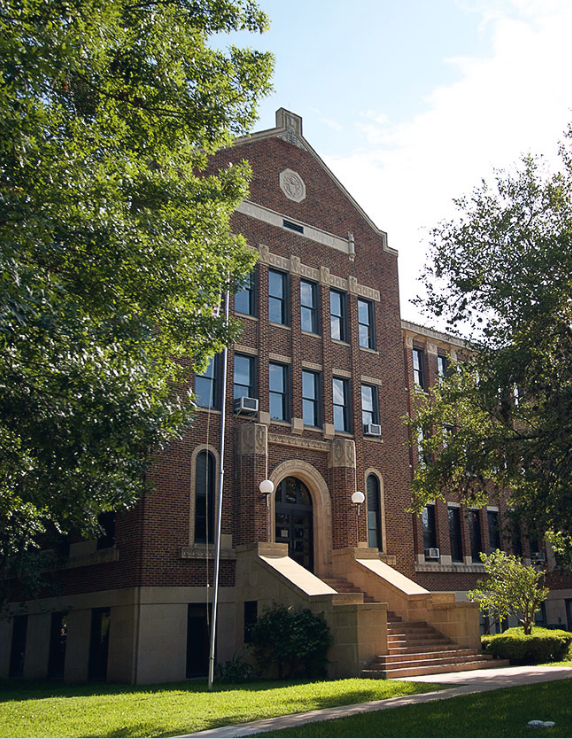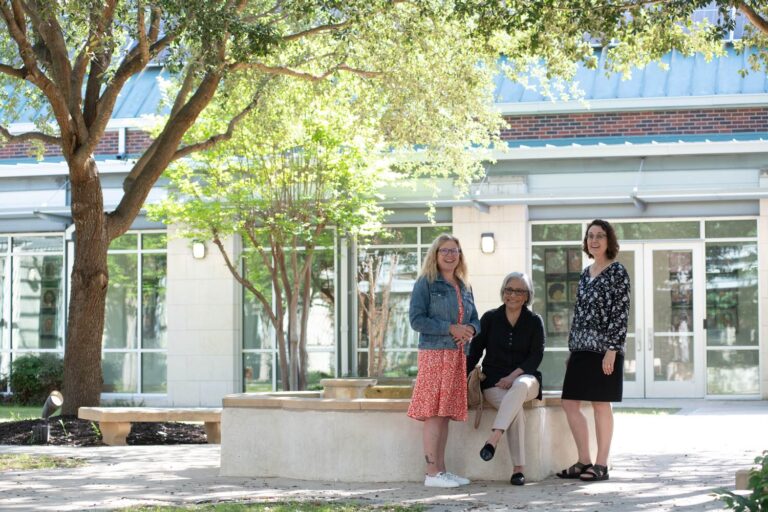The multi-disciplinary field of African American studies has come a long way, but it still has far to go, a prominent African American professor declared Sept. 29 at Oblate School of Theology.
Dr. Peter J. Paris, who retired recently as Princeton Theological Seminary’s Elmer G. Homrighausen Professor Emeritus of Christian Social Ethics, spoke at a symposium celebrating the fifth anniversary of OST’s Sankofa Institute for African American Pastoral Leadership, urging a summit conference on the future of Black studies to propose strategies and assess the contribution of Black Church studies, African American studies and Africana studies to the enrichment of academic life in universities, colleges and divinity schools.
Dr. Paris traced the rise of Black Church studies, African American studies and Africana studies from the mid-20th-century civil rights movement, which fueled a collective resistance to racist doctrines of white supremacy and black inferiority by developing constructive responses to the dogmas that inspired slavery, colonialism, segregation, discrimination, violence, poverty, sexism and terror.
Black Church studies have involved studies in history, sociology, anthropology, political science, psychology, literature and philosophy, he explained. Most African American clergy and theological scholars have been trained either in seminaries or divinity schools, whereas African American religious scholars have earned their doctoral degrees from university graduate schools of religion; however, in recent decades, increasing numbers of these scholars have been teaching both graduate and undergraduate courses in various departments of religion, where they focus only on the academic study of religion as a cultural phenomenon, the professor said.
“African American scholarship and Black Church studies in general were invisible to most white Americans before the 1960s,” he asserted. “Inspired by the 1954 Brown v. Board of Education decision of the U.S. Supreme Court, the civil rights movement burst on the national scene with the Montgomery bus boycott led by Rosa Parks and Dr. Martin Luther King Jr.,” Dr. Paris recalled. “For the first time,” he continued, “white America saw images of mass meetings in black churches that revealed a treasure house of eloquent, persuasive black preachers, as well as men, women and children, singing the old spirituals, often ingeniously updated with the names of contemporary persons and cities in the present struggle,” he explained.
African American scholarship was largely hidden from white consciousness because, like the black churches, it was confined to racially segregated black academic enclaves. Black scholars had earned PhDs from a few predominantly white universities, but only Drew University and the University of Chicago had appointed blacks to their faculties in the early 1960s. Dr. Paris explained that most black scholars of that era focused their attention on the responses of their people to racial oppression in order to repudiate the myth of white supremacy and its teaching about the genetic inferiority of blacks and their natural disposition towards laziness and dependency. These scholars laid the foundation for the emerging African American studies programs demanded by black students after the 1968 King assassination.
Dr. Paris named 15 black scholars as significant forerunners to the nascent African American studies programs that black students in predominantly white universities demanded.
The King assassination engendered anger and distrust among many black clergy toward white liberals who had allied with them, he observed. “They began forming black caucuses to develop constructive strategies for change in their respective environments. This shocked their white allies, who didn’t consider themselves racists because they had allied with the struggle for racial justice for decades, but they had no awareness of the privileges they enjoyed by virtue of having been born with white skin.”
Black Church studies programs have been confined almost entirely to seminaries where their courses have been drawn from faculty members in various departments. Candler School of Theology, Duke University Divinity School, Princeton Theological Seminary and Vanderbilt University Divinity School are among many institutions that now offer certificates in Black Church studies to expand students’ knowledge of the history and contemporary importance of black churches in the United States and around the world, Dr. Paris pointed out
However, the gradual decline of Protestant churches nationally has caused decline in student enrollment in divinity schools. The Episcopal Divinity School and Andover Newton Theological Seminary already have stopped granting degrees. Princeton Theological Seminary is the only independent seminary offering the PhD degree in theology and related fields; all others are divinity schools and theological schools in universities that depend heavily on the number of MDiv students taking the primary degree, but the decline in MDiv students causes decline in faculty and the number of admissions to PhD programs, and eventually, a decline in the number of African American teachers in historically black and predominantly white seminaries which contain the various Black Studies programs, Dr. Paris explained.
He said the civil rights movement also encouraged challenges from a numerous interest groups demanding freedom – white women, black men and women, Native Americans, migrant farm workers, gays and lesbians, the poor, and others.
The Student Non-violent Coordinating Committee issued a radical critique of the philosophy of integration and non-violence, splitting moderates who followed King from radicals who followed Stokely Carmichael. The National Committee of Negro Churchmen bought an advertisement in the New York Times supporting black power.
In 1969, theologian James Cone of Adrian College in Michigan wrote Black Theology and Black Power, which Dr. Paris called “a passionate, erudite, angry, independent, compelling response to racial injustice” and “a blatant condemnation of the hypocrisy of the European and American theological tradition.” Cone asked, “Since there is nothing in European and American theology that spoke directly to slavery, colonization and poverty, why should I let white theologians tell me what the Gospel is?”
Dr. Paris described Cone’s endeavor to demonstrate the relationship of Christian theology to the African American experience of racial oppression “a novel accomplishment destined to make an indelible mark on systematic theology per se and theological studies in general.”
In 1970, the Society for the Study of Black Religion was formed so black scholars could critique and encourage each other’s academic work and assess the impact of black theology on various disciplines in theological education. Most important, Cone’s thought produced vigorous debate among the few black religious scholars teaching in seminaries.
Dr. J. Deotis Roberts published Liberation and Reconciliation: A Black Theology, arguing for a balance between the request for liberation and the quest for reconciliation with whites. “It was an important soft critique which enabled those on Dr. King’s side of the debate over black power to embrace the concept of black power while reaffirming, with no equivocation, the concept of non-violence,” Dr. Paris commented.
Where Black Church studies will go from here remains to be seen. Dr. Paris asserted a need for a summit conference on the future of Black Church studies and Africana studies.
 Through the Sankofa Institute, scholars are able to pursue any degree at Oblate School of Theology with an emphasis in African American Pastoral Leadership. All Institute programs foster an understanding and appreciation of African Americans’ contributions to Christian faith, life, and witness in North America and the world. The concept of “sankofa” is derived from the Akan people of West Africa, expressed in the Akan language as “se wo were fi na wosan kofa a yenkyi.” Literally translated, it means “it is not taboo to go back and fetch what you forgot.” The symbol of the sankofa concept is a mythic bird flying forward while looking back and holding an egg, which symbolizes the future.
Through the Sankofa Institute, scholars are able to pursue any degree at Oblate School of Theology with an emphasis in African American Pastoral Leadership. All Institute programs foster an understanding and appreciation of African Americans’ contributions to Christian faith, life, and witness in North America and the world. The concept of “sankofa” is derived from the Akan people of West Africa, expressed in the Akan language as “se wo were fi na wosan kofa a yenkyi.” Literally translated, it means “it is not taboo to go back and fetch what you forgot.” The symbol of the sankofa concept is a mythic bird flying forward while looking back and holding an egg, which symbolizes the future.



